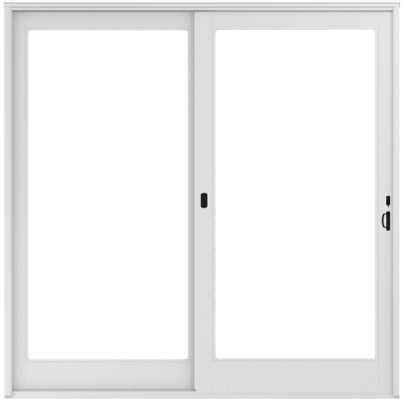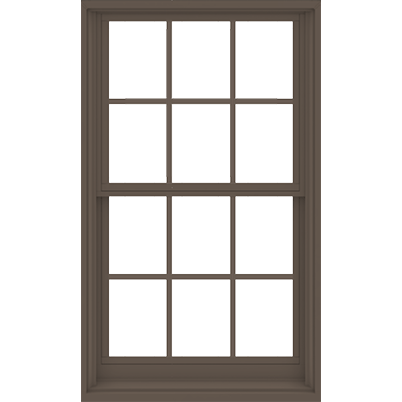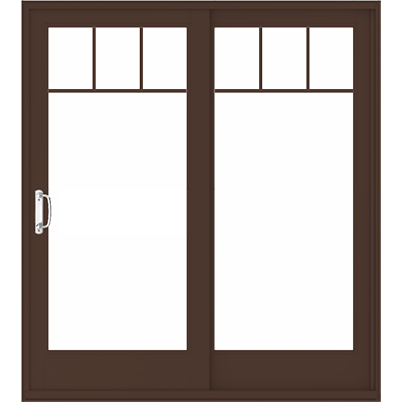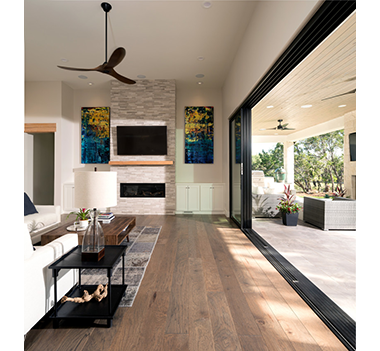Your guide to impact-resistant windows and doors
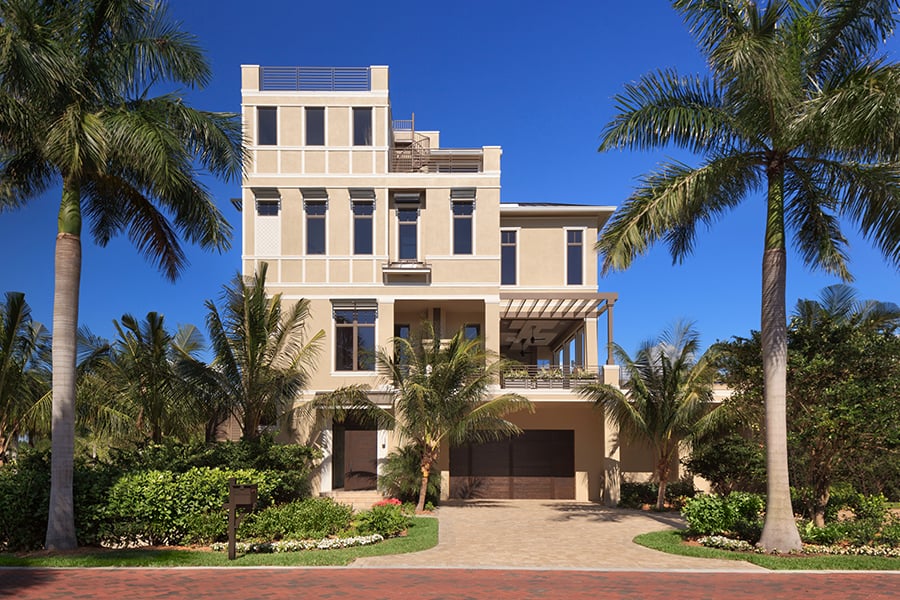
Impact-resistant windows and doors are made for coastal locations that experience extreme weather. But, there are different types of “hurricane windows,” or impact-resistant windows, and the right impact-resistant window for you depends on your location and its code required* performance ratings. To complicate matters further, you’ll also have various options to choose from to better meet performance requirements* — from glass type to performance grade upgrades. We’re here to clear up the confusion so you can specify the right impact-resistant windows and doors for every project.
How to specify impact-resistant windows and doors
Specifying product for a coastal location can be confusing. Here are three key elements to understand:
- Local code requirements* can be met in various ways. Windows are inherently customizable, and you can make selections that provide the level of performance needed while also keeping other considerations in mind, if you have a solid understanding of local code.*
- A window or door’s Performance Grade (PG) certification rating is a good way to understand its structural integrity. PG certifications are ratings that confirm window and door products have been tested against air, water, and structural standards. The higher the rating, the better the performance.
- Impact-resistant glass can help protect a home against flying debris and the risk it poses during a storm, i.e., breaking the window glass and causing the home to become pressurized inside. Laminated glass is strengthened through the addition of a clear plastic laminate layer that is more resistant to tearing and is available on a variety of our products.
Once you understand local performance requirements* and the options available to help you achieve those levels, it becomes much easier to select the right windows and doors.

With a good understanding of what’s required in your area, you can make window and door selections that will provide the necessary level of performance — no matter if you’re in a high-velocity hurricane zone or New Jersey where this home with 400 Series windows and doors is located.*
What are the differences between impact-resistant and regular windows?
Impact-resistant windows are meant for areas near the coast. They have a combination of high-performance materials and hidden reinforcements that go beyond what can be found on a standard window. Impact-resistant windows are required by building code in certain coastal locations where significant weather events and storms occur including hurricanes — such as parts of South Florida.* Various options are available, but our impact-resistant windows all feature laminated glass and performance upgrades like additional locks.
What makes a window impact resistant?
There are many test standards a window must meet to be considered impact resistant, but here’s what you’ll want to know. To be considered impact resistant, a window must pass both impact testing and PG testing.
Impact testing comes in two parts, the first test is meant to simulate the effect of flying debris. This involves shooting a 2x4 of specific dimensions out of an air cannon at a window in various specific ways. To pass the test, the window and impact-resistant laminated glass must not let the 2x4 breach to the interior. For the second test, the window is then pressurized through thousands of pressure cycles. These two tests together determine whether a window is impact resistant.
PG testing refers to the three tests that measure air, water, and pressure resistance. All our windows are subjected to PG testing, whether they’re impact rated or not. PG testing is performed through industry-wide tests, like NAFS.
Our impact-resistant windows have passed both impact-resistance testing and PG testing, which is why they can withstand some of the toughest coastal conditions.
What are the differences between impact and regular doors?
Like impact-resistant windows, impact-resistant patio doors are designed to meet tough performance requirements,* making them suitable for coastal locations. They can have special features — specific materials and hidden reinforced designs — and will have passed impact and performance grade testing. Just like with impact-resistant windows, you have several options to choose from. Our highest performing impact-resistant patio doors, A-Series products with Stormwatch® protection, include laminated glass and structural upgrades like upgraded locks and more.
Browse Andersen® coastal and impact products
As you’re exploring our coastal products, you’ll see the Stormwatch protection label associated with our impact-resistant window and door options. The products with Stormwatch protection are available with upgrades to meet code performance requirements in coastal areas. Remember to always check with your local code official to confirm requirements.
Our highest-performing impact-resistant windows
A-Series windows are our highest-performing windows. They have a composite frame on the exterior that resists corrosion and come standard with a PG50 rating. They can also be ordered with Stormwatch protection, which includes impact-resistant glass and a PG70 upgrade, which adds structural resistance to a window with features like additional locks and extra internal brackets.
Understanding impact-resistant glass
Impact-resistant glass has a laminated interlayer. There are two kinds of laminated glass: monolithic and dual-pane. Here’s what you should know when deciding between the two options:
- Monolithic laminated glass has two panes of glass with a clear laminate material sandwiched in between. This type of glass is a good impact-resistant glass option in places where thermal resistance isn’t needed, such as South Florida and other places with tropical climates.
- Dual-pane laminated glass consists of monolithic laminated glass on the interior and an additional pane of glass on the exterior with an air space in between. This is the best impact-resistant glass option for places where a thermal performance rating is needed.
Did you know that laminated glass has other benefits as well? Its strength can help reduce unwanted noise, and because it resists breaking, it can also provide peace of mind for homeowners worried about break-ins.
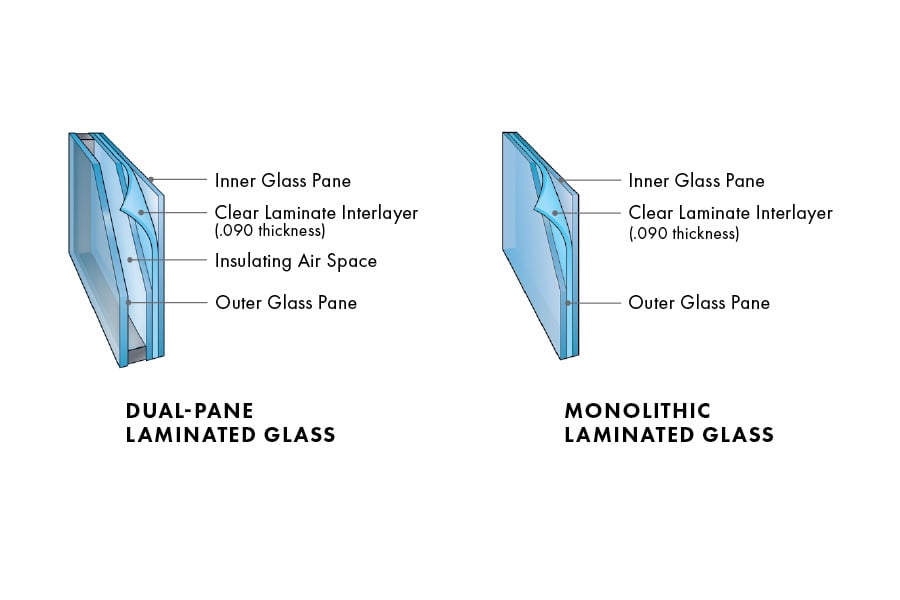
There are two types of impact-resistant glass: dual-pane laminated glass and monolithic laminated glass. Dual-pane laminated glass is recommended in places where thermal performance is needed. Monolithic laminated glass is sometimes used in tropical climates where thermal performance isn’t needed.
Other high-performance window options
If you’re in a coastal area where you need protection but maybe not at the same level as what’s required in a high-velocity hurricane zone, there are other options available. Here are a few to consider:
- 100 Series windows are not available with Stormwatch protection, but they are available with a PG upgrade to be certified to PG50.
- 400 Series Casement and Awning Windows can be ordered with Stormwatch protection, which includes impact-resistant glass and a PG70 rating.
Find out more details about our impact-resistant window options.
Our highest-performing, impact-resistant doors
The A-Series product line is our highest-performing overall — whether you’re looking for windows or doors. Just like A-Series windows, A-Series patio doors are made of composite on the outside that resists corrosion. Both A-Series Gliding Patio Doors and A-Series Hinged Patio Doors are available with Stormwatch protection. A-Series patio doors with Stormwatch protection are certified from PG45 to PG65 depending on size and configuration. Impact-resistant glass and PG upgrades are also available with certifications from PG65 to PG70, depending on size and door type.
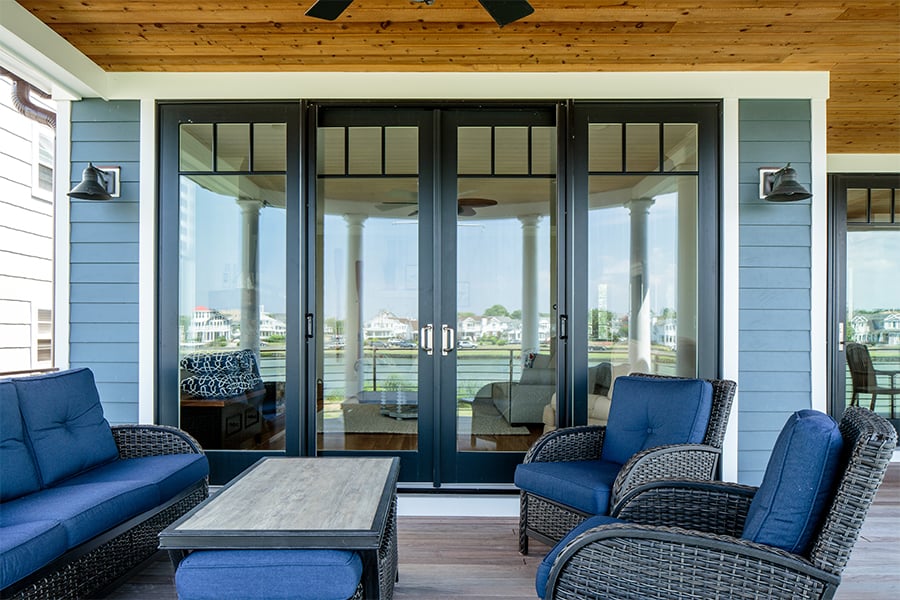
This coastal New Jersey home has a four-panel A-Series Gliding Door — our highest-performing patio door. The A-Series patio doors with Stormwatch protection come with PG50 to PG65 ratings, depending on exact size and configuration. There’s also the option to upgrade PG rating and add impact-resistant glass where additional performance is needed.
Another high-performance door option
If you’re in a coastal area where you need protection but not at the same level as is required in a high-velocity hurricane zone,* consider an E-Series patio door. Standard size units are certified PG25 to PG30 with the option to upgrade to PG50 to PG60 — exact certifications depend on the size and configuration chosen. Additionally, impact-resistant glass is available as an upgrade with E-Series products.
Can French doors be impact resistant?
This is a common question and the answer is yes. What’s commonly referred to as a “French door” is actually a specific style of hinged door — one with a high bottom rail and wide stiles. If you’re looking for a French door that’s suitable in a coastal location, consider the A-Series Frenchwood® Hinged Patio Door with Stormwatch protection and a traditional panel style (as opposed to the contemporary panel option). This door is certified from PG50 to PG65, depending on the size and configuration chosen. You can also get impact-resistant glass with this door.
Our highest-performing big door
One of the greatest benefits of coastal living is the view. If your client is looking to maximize glass, a big door will bring their vision to life. Big doors, or moving glass wall systems, can be specified to suit your coastal location. Here’s what you need to know:
Liftslide Doors are our highest-performing option due to their design, which leverages the weight of the door to fit snugly into the track. This door has special hardware that lifts and slides the door along its track when opening for easy operation. When closed, it lowers onto seals that provide air and water resistance. It’s available with a flush sill that includes a drainage channel. The exact PG rating will depend on the size and configuration selected. Common sizes are certified to PG30, PG40, and PG45. A PG80 option is available on products with the Stormwatch protection upgrade. Impact-resistant glass is also an option. Get all the details on the Coastal Liftslide Door.
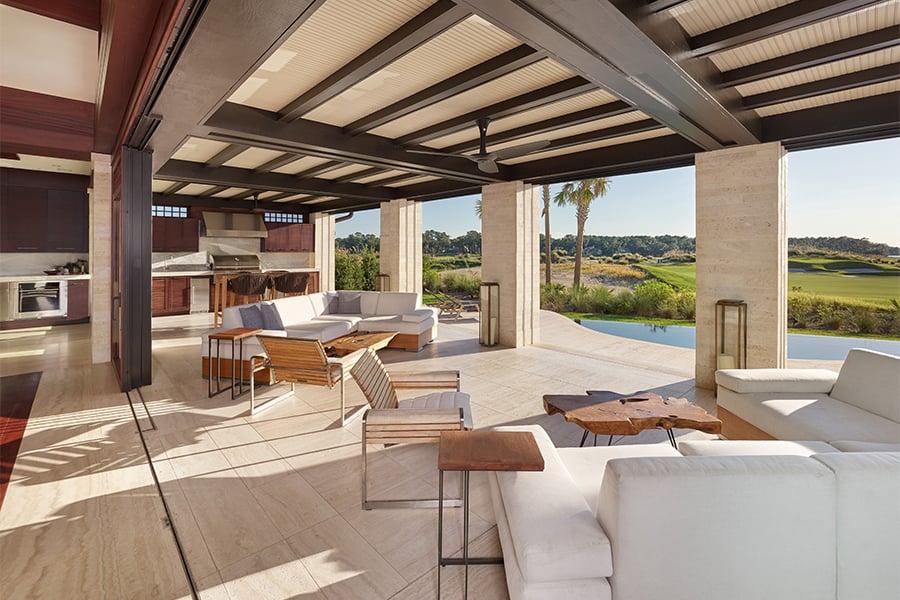
Other big door options
There are two other options to consider if you don’t need the highest level of coastal protection, including:
The Folding Outswing Door is an accordion-style door that’s available with the option to add impact-resistant glass and upgrade to a PG50 certification rating — exact certification will depend on size and configuration chosen. Get more details on the Coastal Folding Outswing Door.
The MultiGlide™ Door is an oversized sliding glass door that’s available with a raised threshold option that enables it to achieve a PG30 rating — exact certification will depend on size and configuration chosen. Impact-resistant glass is not an option with MultiGlide Doors. Get more details on MultiGlide Door performance.
What is the NFRC rating system?
The NFRC rating system is one developed by the National Fenestration Rating Council (NFRC) to help consumers compare the energy efficiency of window and door products across manufacturers. A window or door product with an NFRC certification label has been independently tested (not just tested by the manufacturer) and certified. An NFRC-certified window or door will include various performance values, including U-Factor, Solar Heat Gain Coefficient (SHGC), and visible transmittance. Sometimes, tax credits or energy credits are available when windows or doors meet certain performance levels — such as those specified by ENERGY STAR®. Examining the product’s NFRC rating will help you understand if the window or door qualifies.
*See your local code official for code requirements in your area.
